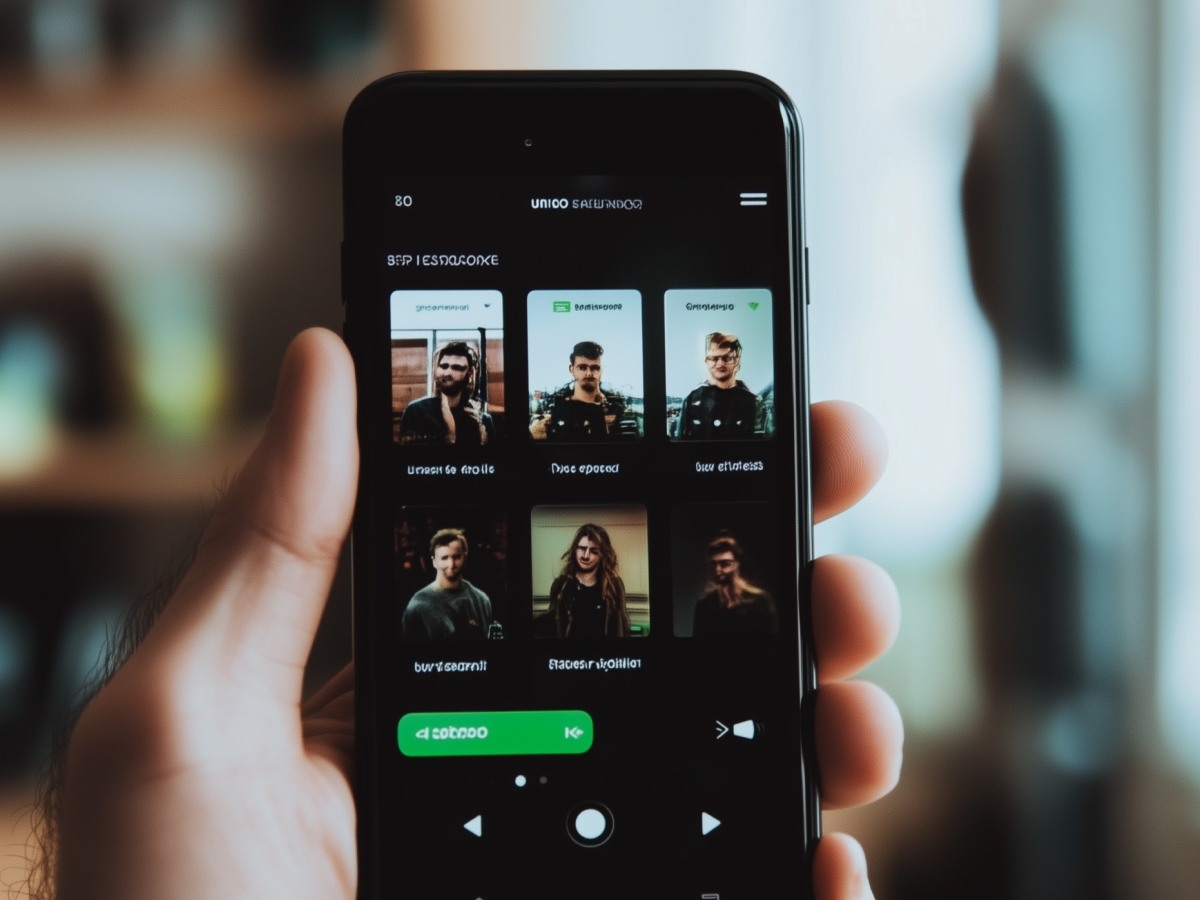Spotify’s scalable tech infrastructure
Spotify runs one of the most advanced digital infrastructures in the world. At its core is a microservices architecture, the system is broken into independent parts, each handling a specific job. This design gives Spotify control. Teams can build, scale, or improve a service without breaking the whole thing. In a fast-moving environment, that’s how you stay operational and innovative without dragging dead weight.
Java is their primary programming language. It’s reliable, works at scale, and has deep framework support. Spotify taps into the Spring Framework to handle the complexities of cloud applications. They also use Scala, particularly for parts of the system where functional programming makes data processing easier and more efficient. Node.js shows up in lighter services where concurrency matters more than heavy computation.
Data flows in real time. Apache Kafka makes that possible. It handles the constant inflow of user actions, playing a song, skipping one, liking an album, without delay. That’s how Spotify keeps things smooth when 500 million users stream at once. Data travels fast across services, and users get instant feedback. Behind it all, Apache Cassandra steps in for high-availability data storage. It’s built to handle scale, especially across multiple regions. That matters when the world expects zero buffering.
On the front-end, React manages how Spotify looks and interacts. Redux and Sass support it, bringing both state management and styling into balance. They used to run on Amazon Web Services, but switched to Google Cloud around ten years ago. That transition helped centralize the platform, improve consistency, and position them for edge computing and advanced data analysis.
Kubernetes runs the show, from infrastructure deployment to lifecycle management. With containerization, Spotify makes sure each microservice runs where it makes the most sense. They standardize deployments across environments without local configuration headaches. This is infrastructure that can flex under pressure and scale when opportunity strikes.
Every platform that Spotify uses, Kafka, Cassandra, Kubernetes, was built for massive scale. They’ve redefined what a streaming backend looks like in production. And for C-suite leaders focused on platform longevity and user growth, this offers a clear example of how strategic technology choices drive market dominance.
Strategic tech migrations enabled efficient scaling and modernization
Scaling is an operational decision. Spotify made that clear in 2015 when it moved from PostgreSQL to Cassandra. At the time, the company was supporting around 35 million users. A transatlantic data cable connecting their London and U.S. data centers failed. Some engineers suspected a shark. What matters is how Spotify responded. Rather than patching a fragile system, they made a decisive shift to Cassandra, an architecture built for scale and distributed reliability.
That migration wasn’t trivial. But their engineers executed it without service disruption using a method called dark loading, where the new system runs in the background, mirroring production traffic to test functionality, while the platform continues to operate as usual. The transition helped them handle data demands without bottlenecks, and more importantly, proved they could engineer big change under pressure.
Their approach to migrations became systematic. Spotify didn’t want downtime or surprises. Over time, they developed a formal migration methodology, identify priorities, productize the process, and automate where possible. The goal was simple: move fast, maintain stability, and avoid delaying product teams. Since 2020, Spotify has gone a step further by shifting key tools higher in the software stack, removing the need for time-consuming migrations in the lower infrastructure layers.
In 2023, they migrated their entire iOS build system to Bazel. Over 120 teams were involved. Bazel offered better performance and greater consistency across builds. This migration was about control. The result is a mobile platform that scales better with user growth and internal development cycles.
Before that, in 2021, Spotify rebuilt its desktop application. They aligned it with the web player to unify both teams under one codebase. That decision shrunk development cycles, improved product consistency, and made multiplatform improvements easier to manage. Container-based UI architecture also allowed both desktop and web to reuse components more efficiently, which cut down on overhead and improved load speed.
For executive teams, this is the model: migrations should be strategic, not reactive. Spotify built a system where infrastructure upgrades don’t paralyze the organization. They embedded that thinking into their engineering culture. They planned for volatility, scaled through change, and stayed focused on delivering performance to users. That’s how they’ve kept moving, without breaks.
Event-driven architecture powers personalized recommendations
Spotify delivers one of the most personalized content experiences on the planet. They use event-driven data pipelines to track every user interaction in real time. Each play, skip, or playlist creation is captured as an event and processed through Apache Kafka. That means Spotify isn’t waiting to analyze data afterward, it’s reacting to user behavior the moment it happens.
These events are continuously streamed and stored in Apache Cassandra, a distributed database designed to handle large, concurrent datasets. The infrastructure allows Spotify to process huge volumes of interaction data from millions of users simultaneously, without latency or data integrity issues. With this setup, what Spotify captures is not just user preferences, but user intent and evolving behavior patterns.
This real-time foundation fuels what Spotify internally refers to as the “Taste Profile”, a dynamic, user-specific dataset built from both behavioral signals and metadata from the content itself. When a user listens to specific genres, skips certain tracks, or searches for new music by a lesser-known artist, those signals are logged, weighted, and translated into insights.
The architecture also supports Spotify’s adaptive recommendation engines. Different features, like Discover Weekly, Daily Mixes, or its AI DJ, pull from this same event-driven dataset but apply purpose-built ranking and filtering logic. Discover Weekly focuses more on newly released songs that fit a user’s taste vector. Daily Mix surfaces established listening preferences grouped by genre. The AI DJ weaves user preferences into a steady stream of contextual listening, which adapts as preferences update.
For executive leaders looking at product engagement and customer stickiness, this is where the value is built. Personalized experiences are engineered from foundational systems that capture behavior and convert it into recommendations. Spotify’s technical design supports personalization and lets it evolve at scale, providing a distinct competitive edge in the attention economy.
Advanced audio analysis and metadata systems enhance machine learning personalization
Spotify doesn’t rely on guesswork to understand music. Their system breaks down tracks into measurable data, 12 distinct sonic metrics that capture rhythm, tone, energy, and other key audio characteristics. These aren’t superficial tags. They’re generated by analyzing the raw audio signal itself. This is how Spotify transforms sound into structured data.
Then comes language. Spotify applies natural language processing (NLP) models to parse lyrics, extract signals from playlist titles, and evaluate web text associated with songs and artists. That means Spotify can understand sentiment, theme, and audience connection, beyond just audio properties. Together, the sonic data and NLP outputs merge into rich metadata layers assigned to each piece of content.
This content-level intelligence is then combined with real-time user interaction data, to form what Spotify calls a Taste Profile. These are not static. Machine learning models update them continuously based on listening habits, frequency, engagement depth, and individual preference shifts over time. This profile exists for every user, and underpins all personalized recommendations across the platform.
In 2024, Spotify pushed further by building an annotation system using generative AI. With millions of songs, videos, and podcasts on the platform, manual tagging doesn’t scale. This system automated internal labeling, expanding their metadata precision and accelerating the training of downstream machine learning models. The result is smarter, more adaptive personalization that supports Spotify’s full content spectrum, not just music but all streaming formats.
For C-suite leaders, this is a direct application of machine learning at infrastructure scale. Spotify’s system isn’t just filtering based on past plays, it’s learning how users connect with content and adjusting in near real-time. Their investment in audio analysis, NLP, and AI-based annotations creates a rich data asset that fuels continuous improvement, not dependence on static algorithms. That approach sustains user engagement—and positions the company ahead in next-generation content intelligence.
Spotify wrapped as a showcase of large-scale data processing and visualization innovation
Spotify Wrapped is more than a user-facing campaign, it’s a demonstration of controlled scale in data operations. Every year, the company processes billions of user interactions to generate a personalized media recap for each listener. Internally, this is regarded as the most resource-intensive analytics workflow in the company. And yet, it’s delivered globally without disruption, on time, at the close of each calendar year.
In 2020, Spotify optimized this process by adopting Sort Merge Bucket (SMB) methodology. It’s a data sorting technique designed to manage large datasets more efficiently, particularly across distributed computing platforms. Instead of reprocessing duplicated reads or re-parsing bloated event logs, SMB allows sorted grouping and indexed partitioning. Spotify engineers integrated this into Apache Beam via Scio, their Scala API, to modularize and streamline execution.
The end result: significantly reduced processing costs and resource usage, without sacrificing output detail. Wrapped 2020 proved that personalized, animated data summaries at global scale could be done faster and more cost-effectively. That success has set a new internal standard for large-scale batch data jobs and remains in use for subsequent years.
But Spotify didn’t stop at data. Developers engineered Wrapped’s visual delivery layer with the same precision. In 2022, they introduced Listening Personalities to categorize users into one of sixteen behavioral segments, clear, data-backed archetypes derived from user activity and musical patterns. By 2023, they advanced the deployment pipeline further, incorporating Lottie to handle animation rendering across platforms. Lottie enabled more efficient file management and media playback, supporting richer visual experiences without compromising performance.
Personalization extended even deeper in 2023. Animators and front-end developers worked in sync to build reusable introductory sequences, which were then dynamically paired with user-specific animations based on individual listening data. This architecture allowed Spotify to serve massive personalization with production-level stability across iOS, Android, and web.
For C-suite executives, what Spotify Wrapped proves is this: customer engagement at scale doesn’t come from raw data volume, it comes from engineered clarity and precise deployment. The visibility and reach of Wrapped is only possible because every layer of the system, from batch processing to UI delivery, is tightly calibrated. That alignment between infrastructure and audience connection is what turns backend performance into measurable market value.
Developer contributions are integral to both backend operations and User-Facing innovations
At Spotify, engineers shape its most visible experiences. Their role extends far beyond maintaining infrastructure. Developers contribute directly to how features are conceptualized, built, and delivered to users at scale. Spotify’s ability to unify backend performance with front-end design stems from this internal structure, where engineering drives both system efficiency and user engagement.
This became clear during the overhaul of the desktop application in 2021. Spotify engineers didn’t just refactor code, they brought web and desktop under one technical and organizational framework. They established a common codebase that allows both platforms to share components, speeding up deployments and reducing fragmentation. Containerized UI modules enable developers to ship updates faster, with less overhead, which improves rule enforcement for performance and cross-platform consistency.
The engineering teams were also directly involved in the delivery of Spotify Wrapped visuals in 2023. They worked alongside animators to implement Lottie animations, an efficient file format that supports scalable, high-performance playback across devices. These technical capabilities enabled the platform to deliver both shared and user-specific animations without requiring custom development per user. That improved delivery time and reduced platform strain during rollout.
These contributions highlight the value of giving engineers decision-making responsibility in core product features. Their work on machine learning infrastructure, event-driven architecture, UI tooling, and real-time analytics gives Spotify a full-stack advantage. This vertical involvement, from data ingestion to visual storytelling, is what makes sure Spotify features are both technically solid and emotionally resonant.
For executives focused on product velocity and platform capability, Spotify’s model shows what’s possible when engineers are embedded in every layer of execution. Their impact goes far beyond code delivery—they define competitive advantage by building systems that respond in real time, personalize at depth, and connect across platforms without friction. That is what keeps Spotify relevant, scalable, and differentiated.
Key takeaways for decision-makers
- Build for scale from the core: Spotify’s modular microservices architecture, powered by technologies like Kafka, Cassandra, and Kubernetes, enables global streaming at low latency. Leaders overseeing platform infrastructure should invest early in scale-ready backend design to reduce fragmentation and improve uptime.
- Engineer migrations as a core competency: Spotify’s proactive migrations—from PostgreSQL to Cassandra to Bazel—minimized downtime and unlocked future scalability. CTOs should embed structured, low-friction migration practices to maintain agility and long-term tech viability.
- Leverage real-time data to drive personalization: Spotify captures real-time user events via Kafka to update individual Taste Profiles continuously. Decision-makers should prioritize event-driven architectures to enable adaptive personalization and increase user engagement.
- Use ML systems that evolve with user behavior: By combining granular audio metrics, NLP, and usage patterns, Spotify personalizes content at unprecedented depth. Product leaders should ensure their ML inputs span both user data and content metadata to sharpen recommendation relevance.
- Treat data processing and delivery as a unified experience: Spotify Wrapped succeeds not just on analytics but on optimized dataflow (SMB) and cross-platform visuals (Lottie animations). Executives should align backend data pipelines tightly with customer-facing presentation layers for high-impact campaigns.
- Empower engineers to own cross-functional impact: Spotify developers shape ore infrastructure and key user experiences like Wrapped and UI improvements. Leaders should structure teams to own both backend systems and product outcomes, accelerating innovation and product alignment.




